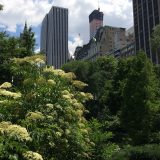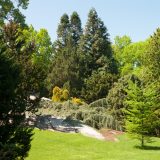Clara will focus on efforts NYC Parks is taking to preserve our imperiled flora, which range from monitoring the federally threatened Seabeach Amaranth to tracking state and locally sensitive species by park. A recent study found that over 500 plant species have gone extinct in the last 250 years, more than twice the number of birds, mammals, and amphibians combined. Meanwhile, research continues to highlight the importance of urban areas in biodiversity conservation. Scientists argue that because cities are often located in landscapes with naturally high geomorphological and biological richness, they harbor high numbers of species, and reflect their regional species pool. The current checklist of NYC’s flora consists of 258 species listed as rare (42), threatened (76), endangered (139), or extinct (1) at the state level. Many more species may be at risk on a local level. Rare plant species are often associated with distinct plant communities and found within unique habitats. Preserving these species, their associates, and habitats is an important aspect of conserving the rich biodiversity of NYC.
Most of Clara’s fieldwork consists of monitoring vegetation pre- and post-restoration, and tracking rare plant populations in NYC Parks. She holds a Master’s of Science from Pace University and Bachelor of Arts from the College of Charleston.







 Location Digital Webinar
Location Digital Webinar